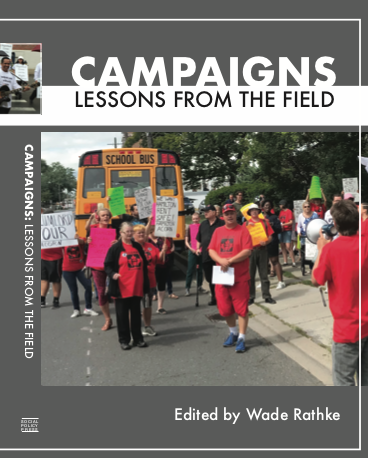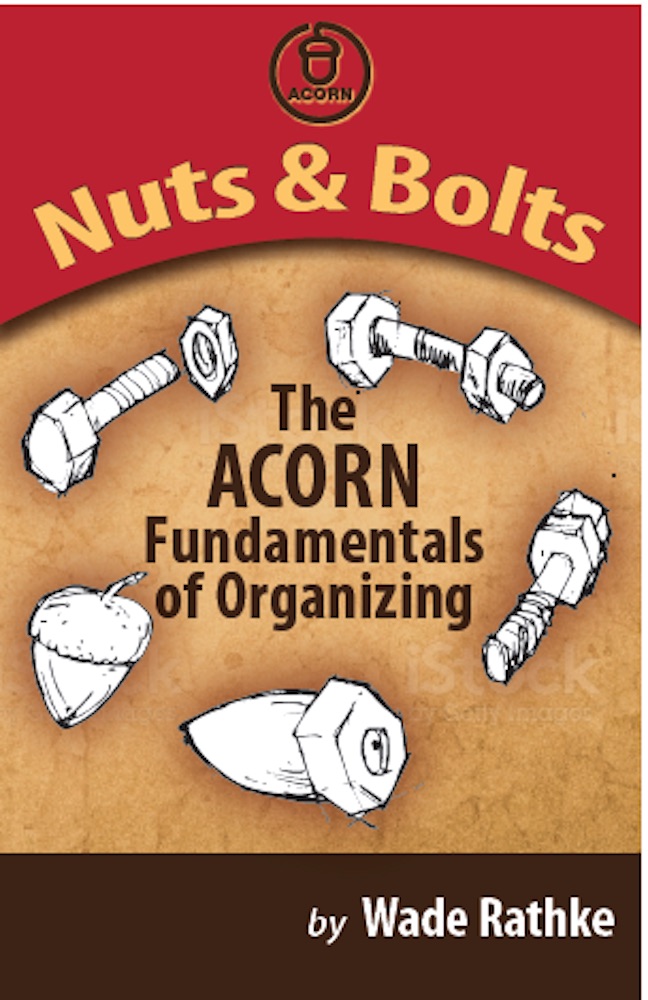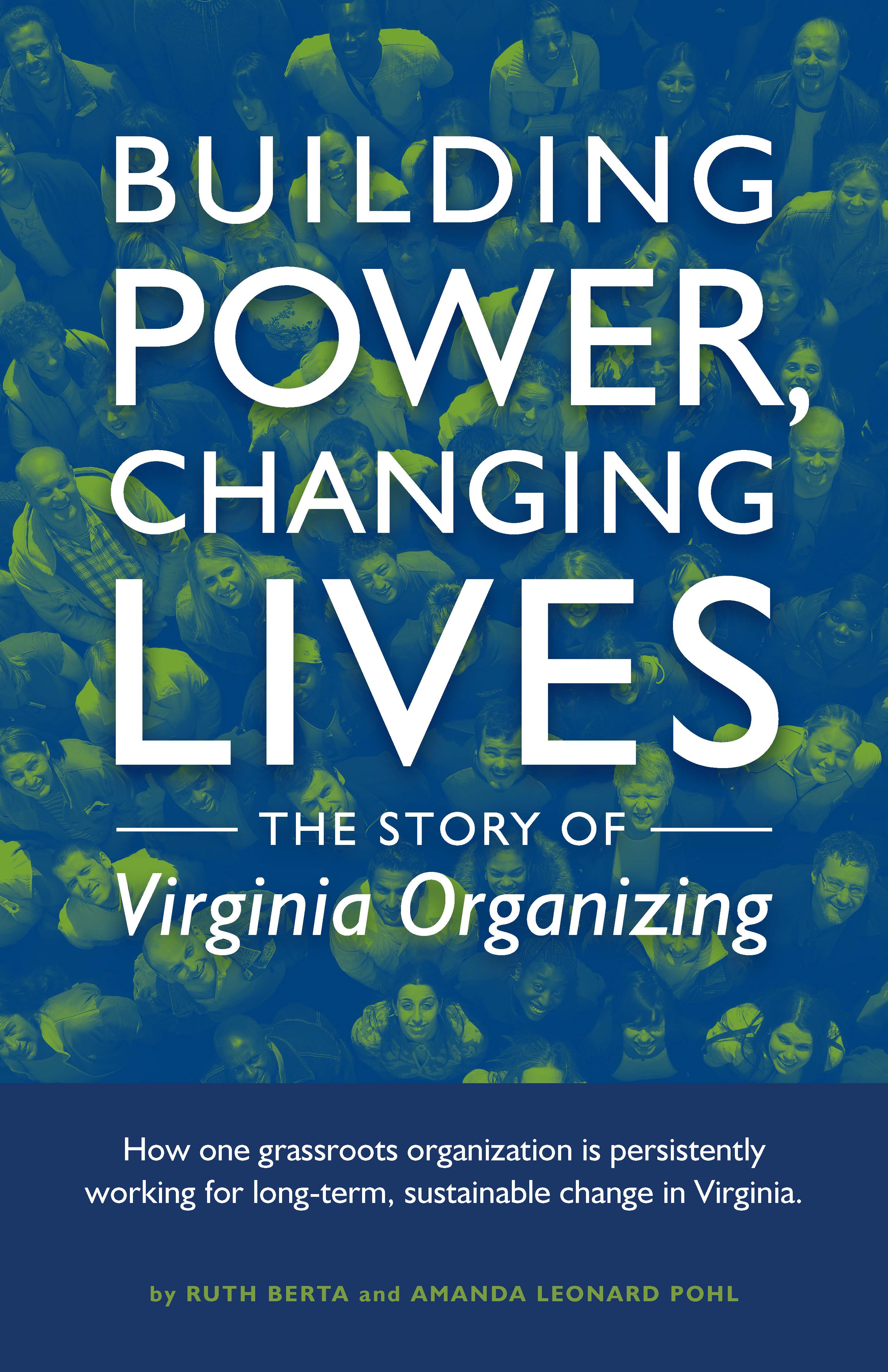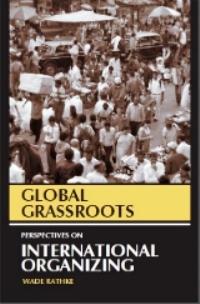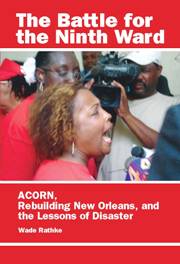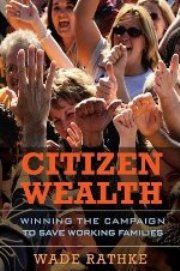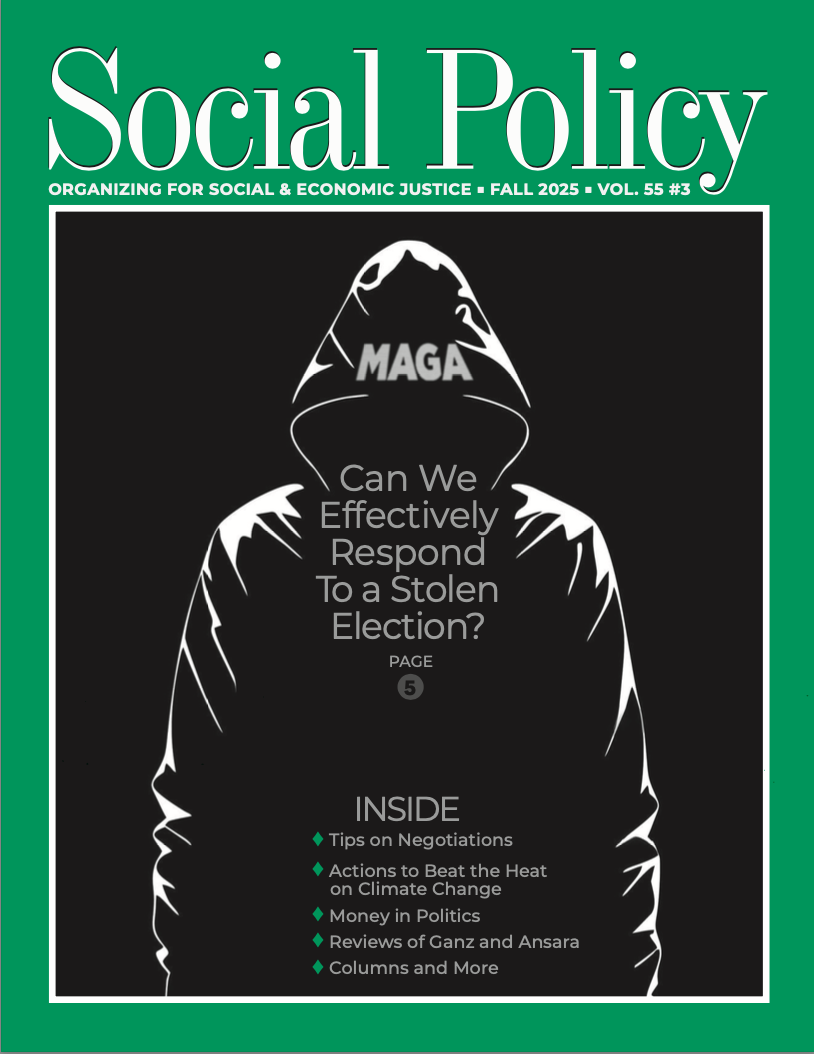Can We Effectively Respond To a Stolen Election?
Written by Mike Miller
“How?” is a common response to the question of how to respond to a stolen election. Bush Jr. and a friendly Supreme Court stole Florida from Al Gore, which gave Bush the Presidency. Richard Daley, Sr. and his Democrat and Republican counterparts in “machine” cities across the country used to steal elections regularly. Robert E. Caro’s impeccably researched biography of Lyndon Johnson details how LBJ stole his first Texas Senate race.
Not much followed beyond rejected court challenges and cries of anguish from the “defeated” and their supporters.
The present reality is that Trump and his allies are well on the way to stealing the 2026 elections throughout the country. While there may be rare exceptions, without non-electoral interventions, there is no place in our formal political system to stop him: not Congress, not the Judiciary, and certainly not the Executive. Fighting on those battlegrounds is fighting on Trump turf—unless a national crisis is created that makes incumbent power back off—like Nixon from destroying the North Vietnam dikes during that war.
The evidence is abundant that Trump and his allies (Republican secretaries of state, majority Republican state legislatures and governors, the Supreme Court, vigilantes to intimidate people at polling places, etc.) will seek to steal ’26 elections. In response, a contingency plan for action is required.
A contingency plan would say:
— If “A” (electoral victory by center and progressive Democrats despite Trump, et al effort to steal elections), celebration and pursuit of a people’s agenda that Trump will veto leading to a strong movement to nominate a progressive Democratic Party presidential candidate in 2028. (I see almost no evidence for this possibility.)
— If “B” (anticipated defeats become a reality that was anticipated and planned for so that our side isn’t off balance as a result of them), then “x” will follow. Defeats will make abundantly clear that our formal, Constitutional ELECTORAL, democracy IS NOT WORKING. That possibility was envisaged when the first Ten Amendments –THE BILL OF RIGHTS–were fought for and won in 1791.
Such a plan would be made public now so that significant numbers of Americans can adopt as their own the out-of-the-box framework of non-electoral action to accomplish electoral purposes.
In fact, the threat of a tactic can be worse than its implementation. Let the MAGA forces and corporate America ruminate on how to deal with it. Under Trump orders, the military might shoot demonstrators in public squares; it doesn’t know how to run street cars and buses, operate supermarkets or teach high school.
By Whom and How?
The thought of mounting such an effort seems overwhelming. But if broken down into a step-by-step, piece-by-piece, process it can be achievable. The first step is to get a favorable response from people who are, or who have access to, the people who could implement the idea. Those implementers are leaders in key positions in civic, activist, interest, identity, political, labor, religious, entertainment, athletic and other places, or people who influence them.
For example, if you know someone who knows someone who is a basketball coach or on a basketball team’s coaching staff, that’s a place to start to find people who might like this idea. From that person you would want to work your way through the relationships that could lead to a conversation with, let’s say, LeBron James or Steve Kerr or Stephen Curry, any one of whom, if persuaded of this idea, could reach out to professional athletes and entertainers whose word would catch the attention of others.
The key is a diverse team working through trusting relationships to reach people who, collectively, could have the influence, authority or power to give “legs” to this idea. The goal is to put together a group of respected people capable of reaching the full range of American people who would have to become participants in such an effort. It is a “step-by-step”, “go/no go” process.
Defeated Momentum: A Lesson from the Past
The pre-election drive for voter participation is now gaining momentum. What happens to momentum when it is defeated?
In 1964, the Mississippi Freedom Democratic Party MFDP) defeat at the national Democratic Party Convention was followed by disarray in “The Movement”: the Student Nonviolent Coordinating Committee’s (SNCC’) collapse (except for Lowndes County) was irreversibly underway: individuals dropped out (drugs, alcohol, withdrawal, radical rhetoric, super-militancy). SNCC’s legendary Mississippi Project Director Bob Moses dramatically withdrew from SNCC, telling his comrades at a late ’64 staff meeting (I was there), “you can have ‘Moses’; I will from now on be ‘Parris’–adopting his mother’s maiden name.
MFDP Convention delegates returned to Mississippi and campaigned for the Lyndon Johnson/Hubert Humphrey ticket. They also adopted a January campaign targeted at the House seating of the newly elected Mississippi Congressmen because Blacks had been denied the right to vote. It had no chance of success.
In 1968, an integrated Mississippi Convention delegation was celebrated by many as a victory. It was a very partial one. MFDP delegates constituted only one quarter of the total. MFDP’s 1964 program for economic reform (in addition to formal democratic reform) was omitted from the ‘68 state reform platform.
In retrospect, the 1964 Convention Challenge may have been a premature effort from the outset. Maybe it wouldn’t have ended in disaster if there had been a contingency plan based on the possible refusal to seat the MFDP delegation. A contingency plan might have led to something else already adopted as an MFDP alternative strategy.
When failure or defeat is anticipated and there is a strategy to respond to it, the result need not be so devastating, and may even open new possibilities. For example, a union leadership might propose to the membership a contract agreement the leaders anticipate will be defeated by the rank-and-file. That "defeat" is used to build unity and momentum behind a strike that can be won.)
Defeat Can Become Victory.
Assuming the likelihood of ’26 elections being stolen, why ask someone to participate in them? If there’s not a planned response to theft, that’s a hard question to answer. If there is, the theft itself motivates efforts to throw out those races in which there is good evidence for thievery having taken place. Simple exposure of an evil is not sufficient. Having a believable plan to defeat it is required. Instead of being a defeat, theft of an election can lead to a tactic that is part of a strategic response. That is the art of the “feint” in military planning.
There are now, as far as I can tell, no widely discussed plans for 2026 elections being stolen. To meet after defeat and then plan a next step is not sufficient to anticipate and contain disillusionment that otherwise happens after major defeat—negativism, defeatism, factionalism, crazy militancy, dropping out and on-and-on.
Such a contingency plan could include non-electoral mass-based action that the people of the country anticipated as a balance against political corruption, namely the Bill of Rights— adopted by three-fourths of the states by December, 1791.
Contingency Planning
For a contingency plan to be put into operation the day after a stolen election requires widespread discussion of its potential necessity beginning yesterday. A center-left alliance against autocracy can now be created that would engage non-electoral political groups in voter education, attempted registration and get-out-the-vote action. That would require of progressives and activists that they participate in electoral activity that otherwise might be disdained.
The tradeoff for that participation would be pre-2026 election agreement by centrists on a strategy of mass nonviolent disruption to bring the system to a halt until new elections or some equivalent are held. (I'll play your game. If it doesn't work, you play mine.)
The non-electoral campaign’s central elements would be nonviolent direct action and economic action (for example, strikes that begin with 10 minute work stoppages and escalate, slowdowns, sick-outs, work-to-rule, and in neighborhoods boycotts like the ones that have been in front of Tesla dealerships throughout the country) until election results are thrown out).
Success in persuading centrists to enter such an agreement in effect moves them away from their present compulsive centrism. Texas Populist Jim Hightower described it: “There’s nothing in the middle of the road but a yellow stripe and dead armadillos.” Failure to so persuade them makes self-evident their lack of an effective response to MAGA.
The Current Warnings Don’t Go Far Enough
In a New York Times Opinion piece (8/14/25), Jamelle Bouie wrote, “for reasons of both personality and political ambition, Trump needs a crisis to govern — or rather, to rule. And if the actual conditions of reality will not give him a state of exception, he’ll create one himself.”
In a letter to supporters, “How does a man like this get elected,” Bernie Sanders wrote, “[D]espite his horrific…policies, …Trump has become the ‘agent of ‘change’.”
So far, so good.
Sanders then listed the outrageous housing, health care, education, food system, income and wage, tax, foreign policy (he could have added climate change and environment) policies that are leading us to disaster, and proposed new directions.
So far, so good.
He asked, “[W]here do we go from here?…[W]e need to think big…But how?”
Not so good.
Calling for “new directions” without "how to take them” ideas is not enough.
The 8/13/25 Hartmann Report concludes, “Our best hope is that, when the crackdowns come, enough of us can mobilize [emphasis added] to bring about a rebooting of our democracy like average people did in South Korea last year as they restored democracy to that nation.”
“Mobilize” and do what?
Polls showing Trump’s declining voter support are irrelevant if an election is stolen and there is no plan to retrieve what was illegally taken.
The Dangers
Without a contingency plan, sectarianism, a turn to demagogs and/or withdrawal are the likely outcomes of defeat. 1964-1980 is filled with examples of that. Electoral victories were followed by elected politician betrayals of promises made during the campaign. The betrayals lead to disillusionment, especially because nothing independent of electoral politics was built before, during and after voting.
Further, the identity and “politically correct” politics agenda overwhelmed a majority rule/minority rights and an economic justice program for all working people program. They need not have been “either/or”.
In the last 50-or-so years I’ve voted for lesser-of-two-evils Democrat (and some good ones too). I also spent most of my time trying to build community organizations that could shape politician’s platforms–like the civil rights movement did in its day, and enforce those platforms if politicians won elections and then turned their backs on their promises. We lack those mechanisms for enforcement which, in turn, leads to the disillusionment that was expressed in the Trump vote.
Center-Left Alliance Or Defeat the Center?
Some on the left have concluded from Zohran Mamgani’s victory in the New York City Democratic mayoral primary that now is the time to challenge centrists everywhere and take control of the Democratic Party. This view ignores where most American voters, particularly the white working class, are. It threatens to give more to Trump and MAGA than it takes from the DNC and Schumer. It is premature as well because it has little evidence of a national trend. In the language of the Old Left, this is a period for a Popular Front, not a United Front and certainly not sectarianism. Some voices come awfully close to calling centrist Democrats “social fascists”. Take a second look at the 1932 to 1936 German elections if you want to see what could happen here.
That’s why I emphasize a center-left alliance rather than a polarization of forces in which the assumption is that the center will fade away, and its supporters will move left. There are voices on the left that now imagine the latter. I think they are seriously mistaken. Having the Auto Workers (UAW) is good. The puzzle is how to get the Teamsters (IBT), not to imagine that the UAW’s progressive president Shawn Fain could beat his IBT centrist Sean O’Brien in a contest between the two.
Options Required
To state the principal point in a different way, you have to have options, especially when the other side cheats. Those options are to be found in mass nonviolent action and in economic action like strikes, boycotts, slow-downs, sick outs, work-to-rule and other tactics perhaps leading to general strikes. My favorite begins with widespread 10-minute work stoppages, and rapidly escalates to last hours, days or weeks until victory is won.
Without powerful, believable, options, a stolen election will be followed by the defeats progressives underwent beginning in the mid-1960s. They were, in part, the results of slogans like, “Ho, Ho, Ho Chi Minh…” or “Burn, Baby, Burn”; or in activities like burning bras, draft cards and neighborhoods. They contributed to the 1980 election of Ronald Reagan.
Conclusion
We have been on a slow, steady, painful, road to where we are now. Doing what we did, only better, isn’t sufficient to reverse directions.
Think outside the box. That’s what Trump and his allies have been doing. What many observers consider his irrationality is, in fact, the rational plan of a man and movement who/that recognize tearing down the formal democratic system requires the activities in which they (including the Supreme Court) now engage.
It takes Trump about five minutes to make a statement that engenders an almost-endless response in mainstream and progressive media, from Democratic politicians, and from public interest groups. He moves on to his next outrage. His strategy is to stir chaos. It is important to recognize that narcissists and otherwise mentally disturbed people can also think rationally about what we might understand as irrational ends. Assassins make careful plans to kill.
The need for action outside the electoral framework and inside the Bill of Rights framework is clear; its possibility should be widely discussed now so that the broad base of support it requires can be built: it is possible to work for candidates and causes, and anticipate their illegal defeat, if the defeat can subsequently turned into a victory.
We can chew gum and walk at the same time.
As Albert Einstein is reported to have said, “Insanity is doing the same thing over and over again and expecting different results.”
That’s true even if the repeat performance is a better one. A different play needs to be performed.
Mike Miller is a 65+ year veteran community organizer. See <www.organizetrainingcenter.com> for more on him and his work, including articles and books, consulting, workshops and internships.


